Call it Biological warfare, germ warfare, or the use of biological toxins; it’s an Emerging Weapon of Mass Destruction in the 21st century. The wide scope of illness using natural operators, their non-identification by routine security frameworks, their simple transportation, and their low creation costs make them a weapon that can be used in any war situation and terroristic assaults. Therefore, natural fighting will progressively challenge public security chiefs, protection experts, and security staff as it unfurls in the front lines of future wars.
Biological warfare is as old as civilization, but international objection over the widespread use of poisonous mustard gas during World War I finally led to a 1925 treaty banning bioweapons during future wars. But does that stop their use? But does that prevent their use? Know in this article.
Contents
- 1 What is Biological Warfare?
- 2 Forms and Types of Biological Warfare
- 3 Biological Warfare as a Strategic Weapon for Military Use
- 4 Use of Biological weapons to gain Strategic or Tactical Advantage over the Enemy
- 5 Biological Warfare as a Means of Terrorism known as Bioterrorism
- 6 Epidemiological signs and traces that may indicate a biological attack
- 7 Conclusion and final thoughts
- 8 Sources
What is Biological Warfare?
Biological warfare is the intentional use of micro-organisms, or infectious agents and toxins such as bacteria, viruses, insects, and fungi, generally of microbial plant or animal origin. They are used as an act of mass destruction warfare to cause widespread disease, death in humans, and destruction of livestock and crops. Biological weapons are often termed “bio-weapons,” “biological threat agents,” or “bio-agents” that are living organisms or replicating entities , i.e., viruses, which are not universally considered “alive,” but after entering the host, they either mutate or multiply and cause various diseases in the host or spread as infection from one host to another, resulting in widespread illness and death.
A biological hazard symbol known as Biohazard is used to label biological materials that carry a significant health risk, including viral samples and used hypodermic needles. In Unicode, the biohazard symbol is U+2623 (☣). The use of biological weapons is prohibited under customary international humanitarian law, as well as a variety of international treaties. The use of biological agents in armed conflict is a war crime.
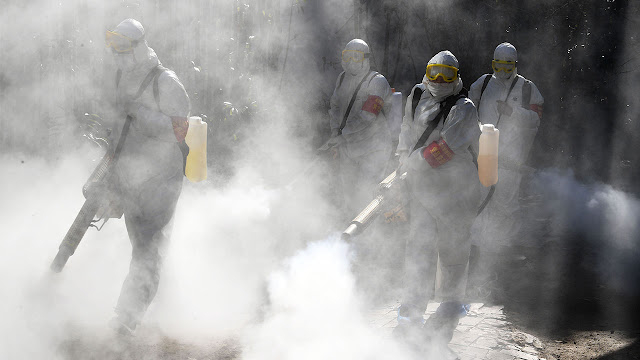
Biological Weapons Convention
Offensive biological warfare, such as mass production, stockpiling, and the use of biological weapons, was banned by the 1972 Biological Weapons Convention. The reason behind this treaty, which has been approved or agreed to by 170 countries, is to prevent a biological attack that could result in large numbers of civilian casualties and cause severe loss to the economy and social infrastructure. Many countries, including the country that has signed the Biological Weapons Convention treaty, currently pursue research into the defense or protection against Biological Warfare, which is not prohibited by the Biological Weapons Convention treaty.
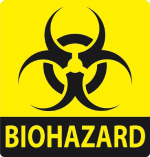
” Image 3 represents the International Biological Hazard Symbol, which was developed in 1966 by Charles Baldwin, It is used in the labeling of biological materials that carry a significant health risk, including viral samples and used hypodermic needles. In Unicode, the biohazard symbol is U+2623 (☣). It represents a biological substance that poses a threat to the health of living organisms, primarily humans. The term and its associated symbol are generally used as a warning so that those who are potentially exposed to the substances will take precautions and those who see this symbol should be alert.”
A country or group that can pose a threat of mass casualty can alter the terms under which other nations or groups interact with it. When indexed to weapon mass and cost of development and storage, biological weapons possess destructive potential and loss of life far above nuclear, chemical, or conventional weapons. Accordingly, in addition to their usefulness as offensive weapons on the battlefield, biological agents are also potentially useful as strategic restraint.
Biological warfare and chemical warfare overlap to an extent, as the use of toxins produced by some living organisms, is admitted under the provisions of both the Biological Weapons Convention and the Chemical Weapons Convention. Toxins and psycho-chemical weapons are often connected as mid-spectrum agents. Unlike bioweapons, these mid-spectrum agents do not reproduce in their host and are typically characterized by shorter incubation periods.
Forms and Types of Biological Warfare
Elementary forms of biological warfare
Elementary or you can say basic forms of biological warfare have been practiced since age. The earliest documented event of intentional use of biological weapons is recorded in Hittite texts of 1500–1200 BC, in which victims of tularemia were driven into enemy lands, causing a pandemic. Although the Assyrians knew about a parasitic fungus of rye known as ergot, which produces ergotism when ingested, there is no evidence that they poisoned enemy wells with this fungus, as claimed.
Scythian archers dipped their arrows in toxins and Roman soldiers their swords into excrements and cadavers – victims were commonly infected by tetanus as a result. In 1346, the bodies of Mongol warriors of the Golden Horde who had died of plague were thrown over the walls of the besieged Crimean city of Kaffa. Specialists disagree about whether this operation was responsible for the spread of the Black Death into Europe, the Near East, and North Africa, resulting in the deaths of approximately 25 million Europeans.
From the sixteenth century AD, Biological materials were extensively used in many parts of Africa, most of the time in the form of poisoned arrows, or powder spread on the war front as well as the poisoning of horses and the water supply of the enemy forces. In Borgu, there were specific mixtures to kill, hypnotize, make the enemy bold, and act as an antidote against the poison of the enemy as well. At that time the manufacture of Biological materials was reserved for an elite and professional class of medicine-men.
Entomological warfare is a type of biological warfare
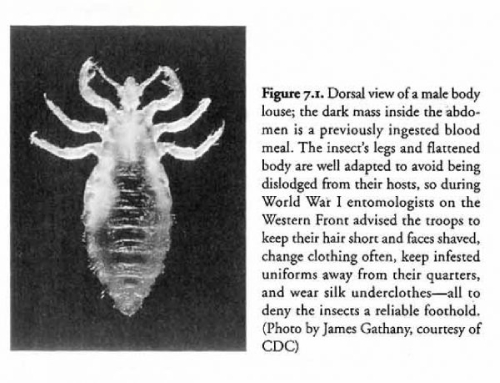
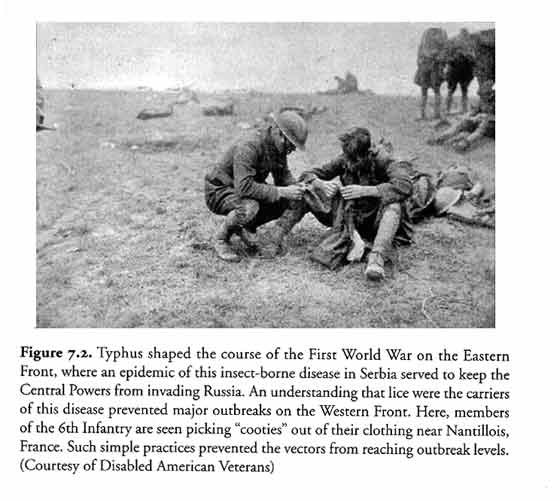
Entomological warfare is a type of biological warfare in which insects are used to attack the enemy. The concept has existed for ages and research and development have continued into the modern era. Entomological warfare can be employed to directly attack insects or as vectors to deliver a biological agent, such as a plague.
Essentially, Entomological warfare exists in three varieties:
- The first type involves infecting insects with a pathogen and then spreading the insects over target areas. Insects then act as a vector as long as they are able to infect any person or animal.
- The second type is a direct insect attack on crops. The insect may not be infected with any pathogen but instead represents a threat to agriculture.
- Another method uses uninfected insects, such as bees, wasps, etc., to directly attack the enemy.
Genetic warfare is a type of biological warfare
Theoretically, innovative approaches in biotechnology, such as synthetic biology could be used in the future to design novel types of biological warfare agents. Genetically modified foods also known as genetically engineered foods, or bioengineered foods are foods produced from organisms that have had changes introduced into their DNA using the methods of genetic engineering, this type of warfare can be used to destroy an entire population, without letting them know.

Most of the biosecurity cases in synthetic biology and genetically engineered foods
- Genetic warfare may demonstrate how to render a vaccine ineffective.
- It can confer resistance to therapeutically useful antibiotics or antiviral agents.
- It will enhance the virulence of a pathogen or render a nonpathogen virulent.
- It may increase the transmissibility of a pathogen and alter the host range of a pathogen.
- It may enable the evasion of diagnostic/detection tools and may enable the weaponization of a biological agent or toxin.
However, these cases are focused on the role of DNA synthesis and the risk of producing genetic material of lethal viruses (e.g. 1918 Spanish flu, polio) in the lab. Recently, the CRISPR/Cas system has appeared as a promising technique for gene editing. The news article was published by The Washington Post as “the most important innovation in the synthetic biology space in nearly 30 years.” While other methods take months or years to edit gene sequences, CRISPR speeds that time up to weeks. However, it has raised a number of ethical concerns due to its ease of use and accessibility, mainly its use in the biohacking space.

Biological Weapons to destroy Agriculture and fisheries
Biological weapons can destroy agriculture a real example is that during the Cold War, the United States developed an anti-crop capability that used plant diseases (bioherbicides, or mycoherbicides) to destroy enemy agriculture. Biological weapons also target fisheries as well as water-based vegetation. In a general war, it was believed that the destruction of enemy agriculture on a strategic scale could thwart Sino-Soviet aggression.
To initiate epiphytotic (epidemics among plants); diseases such as wheat blasts and rice blasts were weaponized in aerial spray tanks and cluster bombs for delivery to enemy watersheds in agricultural regions.
Biological warfare can also specifically target plants to destroy crops or defoliate vegetation. The United States and Britain discovered plant growth regulators (i.e., herbicides) during the Second World War, and initiated a herbicidal warfare program that was eventually used in Malaya and Vietnam in counterinsurgency operations.
Chemicals like herbicides are often grouped with biological warfare and chemical warfare because they may work similarly to Biotoxins or Bioregulators. In the Vietnam War and in the Eelam War, the Army Biological Laboratory tested each agent and transported all the chemical, biological, and radiological (nuclear) materials with the help of the Army’s Technical Escort Unit to Scorch earth tactics and destroy livestock and farmland.

German saboteurs used anthrax and glanders to sicken cavalry horses in the U.S. and France, sheep in Romania, and livestock in Argentina during World War I. On the other hand, Germany itself became a victim of similar attacks – horses bound for Germany were infected with Burkholderia by French operatives in Switzerland.
The U.S. and Canada confidentially investigated the use of Rinderpest(a highly lethal disease of cattle) as a bioweapon during World War II. In the 1980s Soviet Ministry of Agriculture had successfully developed variants of foot-and-mouth disease, and rinderpest against cows, African swine fever for pigs, and psittacosis to kill the chicken. These agents were prepared to spray them down from tanks attached to airplanes over hundreds of miles. The secret program was code-named “Ecology”. During the Mau Mau Uprising in 1952, the poisonous latex of the African milk bush was used to kill cattle.
Anti-Human Form of Biological Weapons
Viral and Fungal agents have been studied and weaponized for a long time including some of the Bunyaviridae (mainly Rift Valley fever virus), Ebolavirus, many of the Flaviviridae (mainly Japanese encephalitis virus), Machupo virus, Marburg virus, Variola virus, Coccidioides, and yellow fever virus. Toxins that can be used as weapons include ricin, staphylococcal enterotoxin B, botulinum toxin, saxitoxin, and many mycotoxins.
These toxins and the organisms that produce them are sometimes referred to as select agents. In the United States, their possession, use, and transfer are regulated by the Centers for Disease Control and Prevention’s Select Agent Program. The former US biological warfare program categorized its weaponized anti-personnel bio-agents as either Lethal Agents (Bacillus anthracis, Francisella tularensis, Botulinum toxin) or Incapacitating Agents (Brucella suis, Coxiella burnetii, Venezuelan equine encephalitis virus, Staphylococcal enterotoxin B).
To be used as a weapon against humans characteristics of a Biological agent are high infectivity, high virulence, non-availability of vaccines, and availability of an effective and efficient delivery system. The stability of the weaponized agent (the ability of the agent to retain its infectivity and virulence after a prolonged period of storage) may also be desirable, particularly for military applications, and the ease of creating one is often considered. Control of the spread of the agent may be another desired characteristic.
The production of the biological agent is not so difficult, many biological agents used in weapons can be manufactured relatively quickly, cheaply, and easily. It is the simplest armament, storage, and delivery to a vulnerable target in an effective vehicle that poses serious problems for the target.
Bacillus anthracis is considered an effective agent for several reasons. First, it forms hardy spores, perfect for dispersal aerosols. Second, this organism is not considered transmissible from person to person, and thus rarely if ever causes secondary infections.
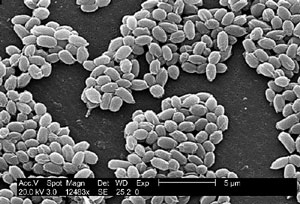
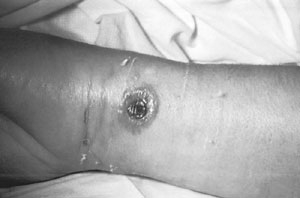
A pulmonary anthrax infection starts with ordinary influenza-like symptoms and progresses to a lethal hemorrhagic mediastinitis within 3–7 days, with a fatality rate that is 90% or higher in untreated patients. Friendly personnel and civilians can be protected with suitable antibiotics. Agents considered for weaponization, or known to be weaponized, include bacteria such as Bacillus anthracis, Brucella spp, Burkholderia mallei, Burkholderia pseudomallei, Chlamydophila psittaci, Coxiella burnetii, Francisella tularensis, some of the Rickettsiaceae (especially Rickettsia prowazekii and Rickettsia rickettsii), Shigella spp., Vibrio cholerae, and Yersinia pestis.
Biological Warfare as a Strategic Weapon for Military Use
As a strategic weapon for military use, a critical issue with a Biological Warfare assault is that; it would take days to be powerful, and accordingly may not promptly stop a restricting power. For example, smallpox, a pneumonic plague has the ability of individual-to-individual transmission through aerosolized respiratory beads. This factor can be disturbing, as an agent might be sent by a powerful system to an unintended populace (the people living in a particular country or area.), impartial or even benevolent powers. The more terrible thing is, that biological weapons could escape from the lab where it was grown or may leak by mistake or intentionally. For example, an analyst who at any point delivers it to the rest of the world before understanding that he was contaminated.
Few such incidents happened when scientists were contaminated when they were working in the lab and passed on Ebola, while there is no proof that their work was coordinated toward Biological Warfare. These cases exhibit the potential for unintentional spread of disease even when the specialists are completely cautious and mindful of the risks. Control of intentional spread in case of Biological Warfare is to a lesser and remains a huge worry for the military and regular citizen populaces of essentially all countries.
Some Real Incidents of Biological Weapons for Military Use.


During the Siege of Fort Pitt in June 1763
During the Siege of Fort Pitt in June 1763, the British Army attempted to use smallpox against Native Americans. One hundred Native Americans died in Ohio from 1763 to 1764 from an unknown virus. However, it is still unclear whether smallpox was a result of the Fort Pitt incident or whether the virus was already present. British marines probably used smallpox in 1789 in New South Wales, Australia. Dr. Seth Karas (2015) says: “Finally, we have a strong circumstantial case supporting the theory that someone intentionally introduced smallpox into Aboriginal populations”.
During World War I and II
The germ theory and advances in bacteriology brought a new level of sophistication to the techniques for the possible use of bio-agents in war by 1900. Biological sabotage in the form of anthrax and glanders was undertaken on behalf of the Imperial German government during World War I (1914–1918), with indifferent results. In the United Kingdom, the Ministry of Supply had established a biological warfare program at Porton Downs, managed by microbiologist Paul Fildes since the start of World War II. The research was supported by Winston Churchill and was soon effectively weaponized against tularemia, anthrax, brucellosis, and botulism toxins.
Due to this Gruinard Island in Scotland was contaminated with anthrax during a series of extensive trials over the course of 56 years. Although the UK never aggressively used biological weapons it had developed, its program was the first to successfully weaponize a variety of deadly pathogens and bring them into industrial production. Other countries, notably France and Japan, also launched their own biological weapons programs. When the United States entered the war, Allied resources were pooled at the request of the British, and the US established a large research program and industrial complex at Fort Detrick, Maryland in 1942 under the direction of George W. Of. Biological and chemical weapons developed during that period were tested at the Dugway Proving Grounds in Utah. Soon facilities were created for the mass production of anthrax spores, brucellosis, and botulism toxins, although the war ended before these weapons could be used on a large scale.
The plague was planned to be used as a biological weapon on American civilians in San Diego, California, during Japan’s Operation Cherry Blossom at Night during the final months of World War II. The plan was set to begin on 22 September 1945 but was not executed due to the surrender of Japan on 15 August 1945.
During the Second Sino-Japanese War
During the Second Sino-Japanese War, the Japanese secret Imperial Army Unit 731 commanded by Lieutenant General Shiro Ishii conducted a biological warfare program based at Pingfan in Manchuria. The unit researched biological warfare often conducted deadly human experiments on prisoners, and produced biological weapons for combat use. Although the Japanese effort lacked the technical sophistication of the American or British programs the unit still surpassed them in its wide application and random and aimless brutality.
Biological weapons were used on Chinese soldiers and civilians in various military operations. The Japanese Army Air Force bombed Ningbo in 1940 with ceramic bombs filled with fleas carrying the bubonic plague. 4,00,000 people could have died during these operations, but many of these operations became ineffective due to inefficient delivery systems. During the Zhejiang-Jiangxi Campaign in 1942, Japanese soldiers were infected with their own biological weapons, resulting in the deaths of about 1,700 Japanese soldiers out of 10,000 soldiers.
In the 1950s Britain witnessed the weaponization of plague, brucellosis, tularemia, and later equine encephalitis and vaccinia viruses, but the program was unilaterally canceled in 1956. However, the United States Army Biological Warfare Laboratories kept working with anthrax, tularemia, brucellosis, Q-fever, and other viruses.
United Nations Ban on Biological Weapons
In 1969 the UK and the Warsaw Treaty separately submitted proposals to ban biological weapons to the United Nations, pressured by US President Richard Nixon to end the production of biological weapons, allowing scientific research only for defensive measures. The Biological and Toxic Weapons Convention was signed by the US, UK, USSR, and other countries in 1972 as a ban on the development, production, and storage of microbes or their toxic products except in quantities necessary for protective and peaceful research.
Despite the signing of the Convention, the Soviet Union continued to research and produce offensive biological weapons on a large scale in a program called Biopreparate. As of September 2018, 182 countries have ratified the treaty, although nine countries are still suspected of working on a biological weapons program.
Use of Biological weapons to gain Strategic or Tactical Advantage over the Enemy
Biological weapons can be employed in a variety of ways to gain a strategic or tactical advantage over the enemy, either through threats, false propaganda to create an atmosphere of fear, or by actual deployment. Biological weapons can also be useful as field denial weapons, like some chemical weapons. These agents may be lethal or non-lethal and may be targeted against a single individual, a group of people, or an entire population. They can be developed, acquired, stored, or deployed by nation-states or non-national groups. In the latter case, or if a nation-state uses it strictly, it may also be considered bioterrorism.
Biological Warfare as a Means of Terrorism known as Bioterrorism
The cost of a biological weapon is estimated to be about 0.05 percent of the cost of a conventional weapon to produce the same mass casualties per kilometer square. In addition, their production is much easier because common technology can be used to produce biological weapons, such as those used in the production of vaccines, foodstuffs, spray devices, beverages, and antibiotics. One of the major factors that attract terrorists to biological weapons is that they can easily evade government agencies or secret agencies. This is because the potential organism has an incubation period of 3 to 7 days, after which the results are visible, giving the terrorists time to escape. Biological weapons attract terrorists because biological weapons are difficult to detect, and are easy to use and economical, making it a serious concern.
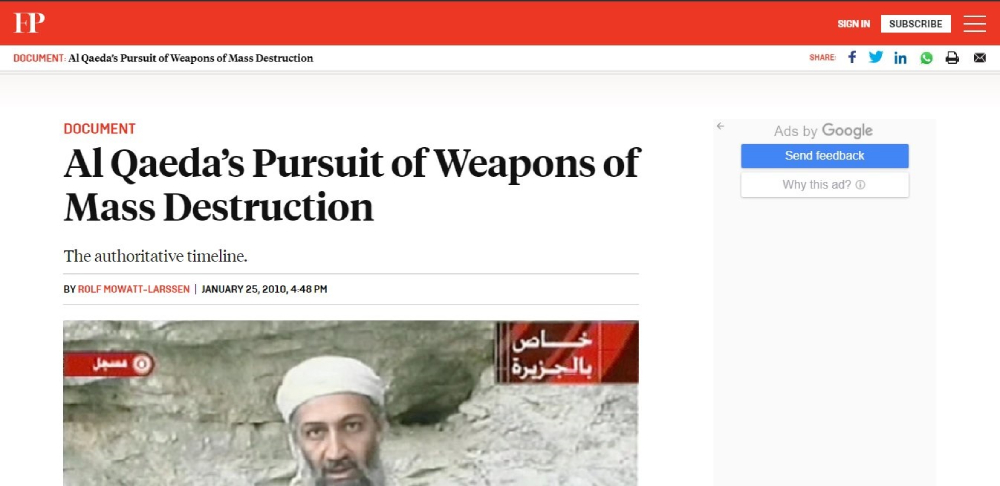
Clustered is a technique, regularly interspaced, short palindromic repeats (CRISPR-Cas9) is now so cheap and widely available that scientists fear amateurs or terrorists may start experimenting with them. In this technique, a DNA sequence is replaced with a new sequence or code that codes for a particular protein or feature, although this technique is a success and is commendable if people with bad intentions start to use it, it can cause issues and potential danger. Concerns have emerged about do-it-yourself biology research organizations because of their associated risk, as a rogue amateur DIY researcher might attempt to develop a dangerous toxin using genome editing technology.
In 2002, when CNN learned of al-Qaeda’s experiments with crude venoms, al-Qaeda began planning ricin and cyanide attacks with the help of a loose association of cells. The infiltrators had infiltrated Turkey, Italy, Spain, France, and many other countries. In 2015 a National Blueprint for Biodefense was released by the Blue-Ribbon Study Panel on Biodefense to Combat the Threat of Bioterrorism, as well as 233 potential exposures to select biological agents outside the primary barriers of biocontrol in the US. As described by the Federal Select Agent Program Annual Report.
While a verification system can reduce bioterrorism, an employee or a lone terrorist who has sufficient knowledge of a company’s facilities can pose a potential threat by injecting a lethal or harmful substance into the facility. Further, it has been found that about 95% of accidents caused by low safety are caused by employees or people with safety clearances.
Epidemiological signs and traces that may indicate a biological attack
- Different and unexplained diseases coexist in the same patient without any other explanation.
- A rare illness that affects a large, disparate population (respiratory disease might suggest the pathogen or agent was inhaled).
- The single cause of a certain disease is caused by an uncommon agent, with a lack of an epidemiological explanation.
- The unusual, rare, genetically engineered strain of an agent.
- High morbidity and mortality rates in regard to patients with the same or similar symptoms.
- Unusual presentation of the disease.
- Unusual geographic or seasonal distribution.
- Stable endemic disease, but with an unexplained increase in relevance.
- Rare transmission (aerosols, food, water).
- No illness is presented in people who were/are not exposed to “common ventilation systems (have separate closed ventilation systems) when illness is seen in persons in close proximity who have a common ventilation system.”
- Illness is unusual for a certain population or age group in which it takes presence.
- Unusual trends of death and/or illness in animal populations, previous to or accompanying illness in humans.
- Many affected reaching out for treatment at the same time.
- The similar genetic makeup of agents in affected individuals.
- Simultaneous collections of similar illnesses in non-contiguous areas, domestic, or foreign.
- An abundance of cases of unexplained diseases and deaths.
Conclusion and final thoughts
It has often been debated that rational thinkers would never use biological weapons aggressively, but the argument should be that biological weapons cannot be controlled, so how to avoid such situations should be debated. The weapon of protection can counterattack and can be stopped before it inflicts damage on the entire army. Agents such as smallpox or other airborne viruses will almost certainly spread around the world and eventually infect the user’s home country as well. However, this argument does not necessarily apply to bacteria; The case of bacteria could be even worse.
For example, anthrax can easily be controlled. The US FBI suspects it can be done using readily available laboratory equipment. Also, using microbial methods, bacteria can be suitably modified to be effective in only a narrow environmental range, the range of the target that distinctly differs from the army on the offensive Thus, only the target might be affected adversely. The weapon may be further used to bog down an advancing army making them more vulnerable to counterattack by the defending force. Note that these concerns generally do not apply to biologically derived toxins – while classified as biological weapons, the organism that produces them is not used on the battlefield, so they present concerns similar to chemical weapons.
For the Role of public health and disease surveillance, it is important to note that most classical and modern biological weapons’ pathogens can be obtained from a plant or an animal that is naturally infected. Thus, a robust surveillance system involving human clinicians and veterinarians may identify a bioweapon attack early in the course of an epidemic.
Biological warfare is a potential threat on the battlefield as well as to a country. It has the ability to destroy any country economically. Given the incubation time of many biological agents and their protean manifestations, it is likely that healthcare workers should be trained for such situations so that they can be on the front lines in the event of a bioterrorist attack. governmental bodies and political leaders should come forward to make proper laws, and a proactive stance is a must.
Sources
- Shwartz, M. (2001). Biological warfare: An emerging threat in the 21st century. News Service, 650, 723-796.
- Wheelis M, Rózsa L, Dando M (2006). Deadly Cultures: Biological Weapons Since 1945. Harvard University Press.
- Riedel, S. (2004, October). Biological warfare and bioterrorism: a historical review. In Baylor University Medical Center Proceedings (Vol. 17, No. 4, pp. 400-406). Taylor & Francis.
- Gray C (2007). Another Bloody Century: Future Warfare.
- Rule 73. The use of biological weapons is prohibited. Archived 12 April 2017 at the Wayback Machine, Customary IHL Database, International Committee of the Red Cross (ICRC)/Cambridge University Press.
- Alexander Schwarz, “War Crimes” in The Law of Armed Conflict and the Use of Force: The Max Planck Encyclopedia of Public International Law Archived 12 April 2017 at the Wayback Machine (eds. Frauke Lachenmann & Rüdiger Wolfrum: Oxford University Press, 2017), p. 1317.
- Littlewood, J. (2005). The Biological Weapons Convention: A Failed Revolution. Ashgate.
- “Show Treaty”. disarmament.un.org. Archived from the original on 14 February 2018.
- Mayor A (2003). Greek Fire, Poison Arrows & Scorpion Bombs: Biological and Chemical Warfare in the Ancient World. Woodstock, N.Y.: Overlook Duckworth. ISBN 978-1-58567-348-3.
- Croddy, Eric; Perez-Armendariz, Clarissa; Hart, John (2002). Chemical and biological warfare: a comprehensive survey for the concerned citizen. Copernicus Books. p. 219. ISBN 0387950761.
- Andrew G. Robertson, and Laura J. Robertson. “From asps to allegations: biological warfare in history,” Military medicine (1995)
- Akinwumi, Olayemi (1995). “BIOLOGICALLY-BASED WARFARE IN THE PRE-COLONIAL BORGU SOCIETY OF NIGERIA AND REPUBLIC OF BENIN”. Transafrican Journal of History. 24: 123–130.
- “An Introduction to Biological Weapons, Their Prohibition, and the Relationship to Biosafety Archived 12 May 2013 at the Wayback Machine”, The Sunshine Project, April 2002. Retrieved 25 December 2008.
- Lockwood JA (2008). Six-legged Soldiers: Using Insects as Weapons of War. Oxford University Press. pp. 9–26. ISBN 978-0195333053.
- Buller M (21 October 2003). The potential use of genetic engineering to enhance orthopoxviruses as bioweapons. International Conference “Smallpox Biosecurity. Preventing the Unthinkable. Geneva, Switzerland.
- Wimmer E, Mueller S, Tumpey TM, Taubenberger JK (December 2009). “Synthetic viruses: a new opportunity to understand and prevent viral disease”. Nature Biotechnology. 27 (12): 1163–72. DOI:10.1038/nbt.1593. PMC 2819212. PMID 20010599.
- Basulto D (4 November 2015). “Everything you need to know about why CRISPR is such a hot technology”. The Washington Post. ISSN 0190-8286. Archived from the original on 1 February 2016.
- Ledford H (June 2015). “CRISPR, the disruptor”. Nature. 522 (7554): 20–4. Bibcode:2015Natur.522…20L. DOI:10.1038/522020a. PMID 26040877.
- “Loner Likely Sent Anthrax, FBI Says”. Los Angeles Times. Archived from the original on 7 April 2008.
- “Anthrax Facts | UPMC Center for Health Security”. Upmc-biosecurity.org. Archived from the original on 2 March 2013.
- Alibek K, Handelman S (2000). Biohazard: The Chilling True Story of the Largest Covert Biological Weapons Program in the World – Told from Inside by the Man Who Ran it. Delta. ISBN 978-0-385-33496-9.
- Franz D. “The U.S. Biological Warfare and Biological Defense Programs” (PDF). Arizona University. Archived (PDF) from the original on 19 February 2018.
- “Vietnam’s war against Agent Orange”. BBC News. 14 June 2004. Archived from the original on 11 January 2009.
- “Critics accuse Sri Lanka of using scorched earth tactics against Tamils”. The National.
- “Biowarfare Against Agriculture”. fas.org. Federation of American Scientists.
- Croddy, Eric; Perez-Armendariz, Clarissa; Hart, John (2002). Chemical and biological warfare: a comprehensive survey for the concerned citizen. Copernicus Books. p. 223. ISBN 0387950761.
- Verdcourt B, Trump EC, Church ME (1969). Common poisonous plants of East Africa. London: Collins. p. 254.
- Jones DS (2004). Rationalizing Epidemics. Harvard University Press. p. 97. ISBN 978-0674013056.
- King, J. C. H. (2016). Blood and Land: The Story of Native North America. Penguin UK. p. 73. ISBN 9781846148088.
- Ranlet, P (2000). “The British, the Indians, and smallpox: what actually happened at Fort Pitt in 1763?”. Pennsylvania History. 67 (3): 427–441. PMID 17216901.
- Christopher W (2013). “Smallpox at Sydney Cove – Who, When, Why”. Journal of Australian Studies. 38: 68–86. DOI:10.1080/14443058.2013.849750. S2CID143644513.
- Distinguished Research Fellow, Center for the Study of WMD, National Defense University, Ft. McNair, Washington.
- Carus WS (August 2015). “The history of biological weapons use: what we know and what we don’t”. Health Security. 13 (4): 219–55. DOI:10.1089/hs.2014.0092. PMID 26221997.
- Koenig, Robert (2006), The Fourth Horseman: One Man’s Secret Campaign to Fight the Great War in America, PublicAffairs.
- Baxter RR, Buergenthal T (28 March 2017). “Legal Aspects of the Geneva Protocol of 1925”. The American Journal of International Law. 64 (5): 853–879. DOI:10.2307/2198921. JSTOR 2198921. Archived from the original on 27 October 2017.
- Prasad SK (2009). Biological Agents, Volume 2. Discovery Publishing House. p. 36. ISBN 9788183563819.
- Garrett L (2003). Betrayal of Trust: The Collapse of Global Public Health. Oxford University Press. pp. 340–341. ISBN 978-0198526834.
- Guillemin J (July 2006). “Scientists and the history of biological weapons. A brief historical overview of the development of biological weapons in the twentieth century”. EMBO Reports. 7 Spec No (Spec No): S45-9. DOI:10.1038/sj.embor.7400689. PMC 1490304. PMID 16819450.
- Williams P, Wallace D (1989). Unit 731: Japan’s Secret Biological Warfare in World War II. Free Press. ISBN 978-0-02-935301-1.
- Gold H (1996). Unit 731 testimony (Report). pp. 64–66.
- Barenblatt, D. (2004). A plague upon humanity: The secret genocide of axis Japan’s germ warfare operation.
- “The World’s Most Dangerous Weapon”. Washington Examiner. 8 May 2017.
- Croddy E, Wirtz JJ (2005). Weapons of Mass Destruction. ABC-CLIO. p. 171. ISBN 978-1-85109-490-5.
- “Weapons of Mass Destruction: Plague as Biological Weapons Agent”. GlobalSecurity.org. Archived from the original
- Clark, W. R. (2008). Bracing for Armageddon?: The science and politics of bioterrorism in America. OUP USA.
- “26 Countries’ WMD Programs; A Global History of WMD Use – US – Iraq War – ProCon.org”. Usiraq.procon.org. 29 May 2009. Archived from the original on 19 April 2012.
- “Overview of Potential Agents of Biological Terrorism | SIU School of Medicine”. SIU School of Medicine. Archived from the original on 19 November 2017.
- Millet, P., Kuiken, T., & Grushkin, D. (18 March 2014). Seven Myths and Realities about Do-It-Yourself Biology. from http://www.synbioproject.org/publications/6676/ Archived at the Wayback Machine
- “Al Qaeda’s Pursuit of Weapons of Mass Destruction”. Foreign Policy. Archived from the original on 14 November 2017.
- “A National Blueprint for Biodefense: Leadership and Major Reform Needed to Optimize Efforts” (PDF). ecohealthalliance.org. Archived (PDF) from the original on 1 March 2017.
- “Federal Select Agent Program”. www.selectagents.gov. Archived from the original on 24 November 2017.
- Wagner D (2 October 2017). “Biological Weapons and Virtual Terrorism”. HuffPost. Archived from the original on 4 November 2017.
- European Union cooperative Initiatives to improve Biosafety and Biosecurity (12 August 2010). “Meeting of the States Parties to the Convention on the Prohibition of the Development, Production and Stockpiling of Bacteriological (Biological) and Toxin Weapons and on Their Destruction” (PDF).
- Guillemin J (2013). The Soviet Biological Weapons Program: A History. Politics & The Life Sciences. 32. pp. 102–105. DOI:10.2990/32_1_102. S2CID 155063789.
- Ryan CP (2008). “Zoonoses likely to be used in bioterrorism”. Public Health Reports. 123 (3): 276–81. DOI:10.1177/003335490812300308. PMC 2289981. PMID 19006970.
- Wilkening DA (2008). “Modeling the incubation period of inhalational anthrax”. Medical Decision Making. 28 (4): 593–605. DOI:10.1177/0272989X08315245. PMID 18556642. S2CID 24512142.
- Wilkening DA (2008). “Modeling the incubation period of inhalational anthrax”. Medical Decision Making. 28 (4): 593–605. DOI:10.1177/0272989X08315245. PMID 18556642. S2CID 24512142.
- Toth DJ, Gundlapalli AV, Schell WA, Bulmahn K, Walton TE, Woods CW, Coghill C, Gallegos F, Samore MH, Adler FR (August 2013). “Quantitative models of the dose-response and time course of inhalational anthrax in humans”. PLOS Pathogens. 9 (8): e1003555. DOI:10.1371/journal.ppat.1003555. PMC 3744436. PMID 24058320.
- Treadwell TA, Koo D, Kuker K, Khan AS (March–April 2003). “Epidemiologic clues to bioterrorism”. Public Health Reports. 118 (2): 92–8. DOI:10.1093/phr/118.2.92. PMC 1497515. PMID 12690063.
- “Physorg.com, “Encoded Metallic Nanowires Reveal Bioweapons”, 12:50 EST, 10 August 2006″. Archived from the original on 5 June 2011.
- “BiosparQ features”. Archived from the original on 13 November 2013.
- Genuth I, Fresco-Cohen L (13 November 2006). “BioPen Senses BioThreats”. The Future of Things. Archived from the original on 30 April 2007.
FACT CHECK: We strive for accuracy and fairness. But if you see something that doesn’t look right, please Contact us.
DISCLOSURE: This Article may contain affiliate links and Sponsored ads, to know more please read our Privacy Policy.
Stay Updated: Follow our WhatsApp Channel and Telegram Channel.
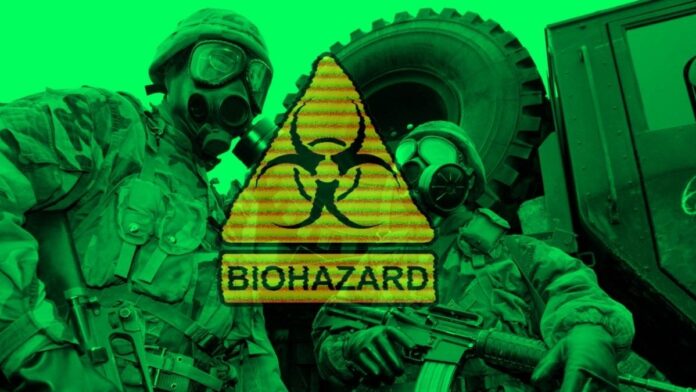












277220 686642Hi there! I could have sworn I’ve been to this internet site before but soon after reading by way of some with the post I realized it is new to me. Anyhow, I’m sure glad I identified it and I’ll be book-marking and checking back often! 577005
http:\\www.dieJLlL7DU.biz
It’s really a serious matter of consern